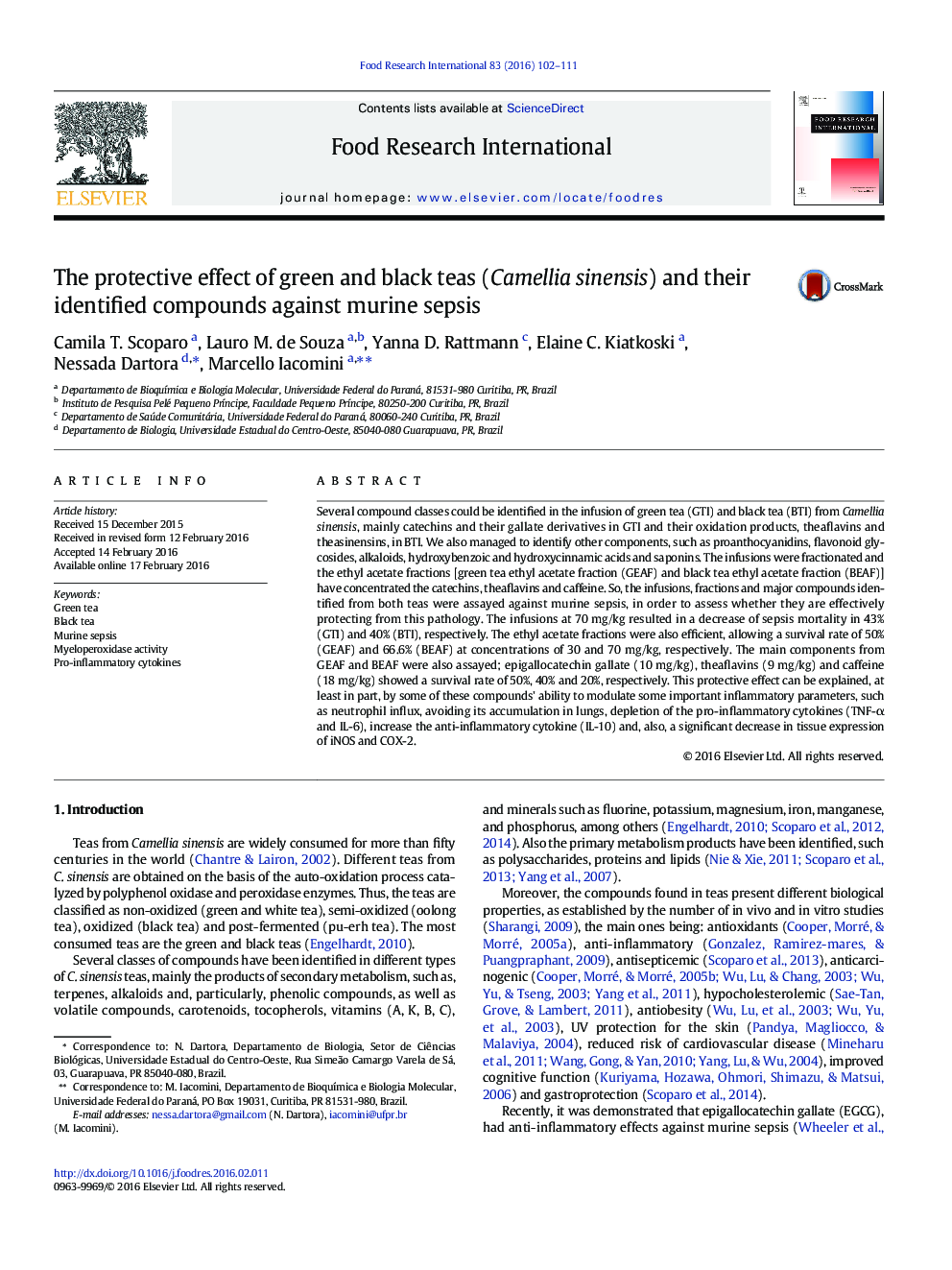| کد مقاله | کد نشریه | سال انتشار | مقاله انگلیسی | نسخه تمام متن |
|---|---|---|---|---|
| 4561129 | 1628465 | 2016 | 10 صفحه PDF | دانلود رایگان |

• Green and black teas presented several compounds with recognized therapeutic potential
• Infusions, ethyl acetate fractions and standard compounds resulted in a decrease in sepsis mortality.
• The protective effect can be explained by modulation of inflammatory parameters
• MPO activity, anti- and pro-inflammatory cytokines and levels of iNOS and COX-2 were evaluated.
• Possible control of the complex inflammatory cascade and thus the management of sepsis effects.
Several compound classes could be identified in the infusion of green tea (GTI) and black tea (BTI) from Camellia sinensis, mainly catechins and their gallate derivatives in GTI and their oxidation products, theaflavins and theasinensins, in BTI. We also managed to identify other components, such as proanthocyanidins, flavonoid glycosides, alkaloids, hydroxybenzoic and hydroxycinnamic acids and saponins. The infusions were fractionated and the ethyl acetate fractions [green tea ethyl acetate fraction (GEAF) and black tea ethyl acetate fraction (BEAF)] have concentrated the catechins, theaflavins and caffeine. So, the infusions, fractions and major compounds identified from both teas were assayed against murine sepsis, in order to assess whether they are effectively protecting from this pathology. The infusions at 70 mg/kg resulted in a decrease of sepsis mortality in 43% (GTI) and 40% (BTI), respectively. The ethyl acetate fractions were also efficient, allowing a survival rate of 50% (GEAF) and 66.6% (BEAF) at concentrations of 30 and 70 mg/kg, respectively. The main components from GEAF and BEAF were also assayed; epigallocatechin gallate (10 mg/kg), theaflavins (9 mg/kg) and caffeine (18 mg/kg) showed a survival rate of 50%, 40% and 20%, respectively. This protective effect can be explained, at least in part, by some of these compounds' ability to modulate some important inflammatory parameters, such as neutrophil influx, avoiding its accumulation in lungs, depletion of the pro-inflammatory cytokines (TNF-α and IL-6), increase the anti-inflammatory cytokine (IL-10) and, also, a significant decrease in tissue expression of iNOS and COX-2.
Journal: Food Research International - Volume 83, May 2016, Pages 102–111